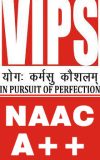India's Millet led growth: From Overlooked Ragi to Global Superfood

Millets are going to be the superfood of India. It has started gaining popularity and is also being promoted as a global brand while highlighting its benefits like its nutritional value, environmental sustainability, and cultural significance. Millets are a kind of coarse cereal being cultivated for thousands of years, mostly in Asia and Africa, and are consumed by over 50 crore people worldwide on a daily basis. Millets have a long history and great nutritional value. But still, they’ve been overlooked in favour of other staple crops, such as rice and wheat.
But, India is seeking to change this by rebranding their old and failed millet as a superfood that is high in iron and calcium, and as a climate-friendly crop that consumes less water and has a lower carbon footprint than rice or wheat. India is targeting nearly 2.1 crore tons of millet production in 2022-23. While India’s millet exports were 1,47,501 tons in FY21, they rose to 1,59,332 tons in FY22. This rebranding is also aiming at raising their exports from $64 million in 2021-22 to $100 million by FY25.
India has launched several initiatives to support this campaign, including the Millet International Initiative for Research and Awareness (MIIRA), made for worldwide research collaboration for food crops. India is making these efforts to get the world to observe 2023 as the International Year of Millets, and convincing 72 countries to support them made them successful in getting the proposal passed at the UN in March 2021.
India has also been implementing a program under the National Food Security Mission (NFSM) on nutri-cereals (millets) in 212 districts of 14 states since 2018-19. Incentives were provided to farmers for crop production, protection technologies, nutrient, and pest management, and more. Millets are supplied to beneficiaries under the targeted public distribution system, procured, stored, and distributed by the state governments under decentralized procurement, with MSP-based procurement under the central pool.
Millets can be grown on arid or parched lands with minimal inputs and their resilience to climate change make them an ideal solution for countries to increase self-sufficiency and cut down on imported cereal grains. They use 70% less water than rice and need 40% less energy for processing, making them climate-friendly and also richer in key nutrients with a lower glycemic index, reducing the risk of diabetes and associated ailments.
According to an Indian study, replacing rice with millet in standard meals can boost growth in children and adolescents by 26 to 39 percent. Children consuming millet for a period ranging from three months to four and a half years showed a relative increase of 28.2 percent in height and 26 percent in weight, with a 39 percent increase in the mid-upper arm circumference and 37 percent increase in the chest circumference when compared to children on regular rice-based diets.
Millet helped to manage type 2 diabetes, lower cholesterol levels, and tackle obesity and anaemia. Countries can start nutrition-developing intervention programs by adding millet to mid-day meal schemes and various maternal and child health programs. The awareness and marketing campaigns will generate an understanding and interest in millets to bring the benefits of millets to the wider society.


